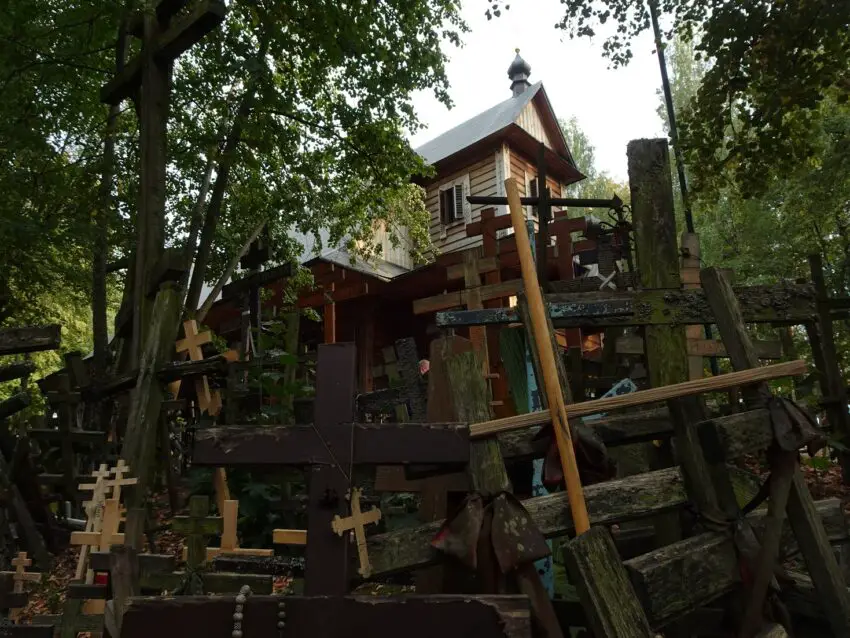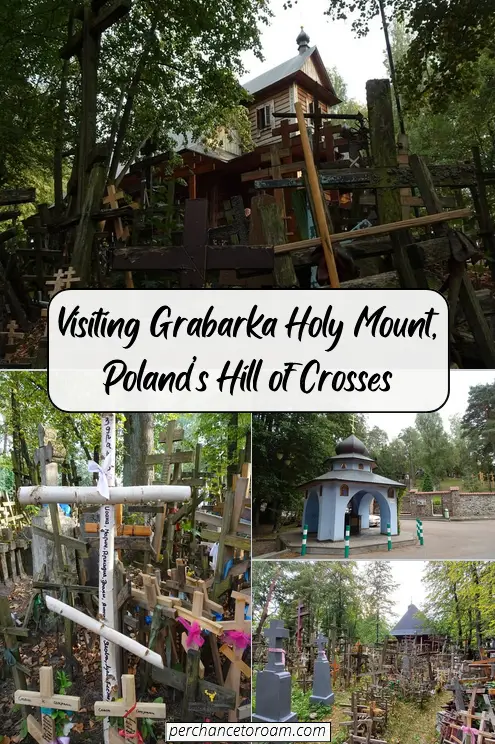In the countryside of eastern Poland’s Podlaskie Region sits a place unlike any other in the country. On a wooded hill in the forest, thousands of crosses of all shapes and sizes surround a small wooden church. Grabarka is Poland’s most important Orthodox Pilgrimage Site, and a truly unique sight.
We visited the Mount on our recent trip through Podlaskie and were fascinated by the surreal atmosphere of the place. We felt a certain sense of dreamlike unreality while walking through the forest of crosses. Read on for everything you need to know about visiting Grabarka Holy Mount.
This post may contain affiliate links, and I might earn a small commission at no additional cost to you. For more info, click here.
What is the History Behind Grabarka Holy Mount?
In the early 18th century there was a big Cholera epidemic in the region and the story goes that one of the afflicted had a vision that he would be healed if he placed a cross atop a certain hill and drank water from a nearby spring.
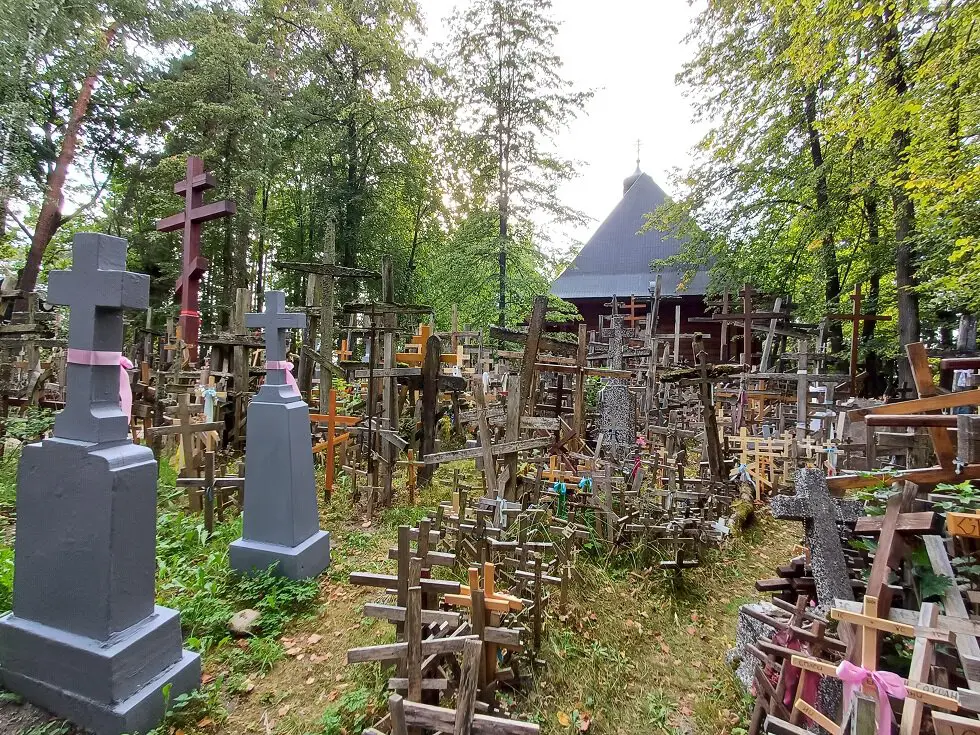
According to the story, the man was actually healed and ever since, Grabarka has become a place of pilgrimage to Orthodox Christians in general, and people suffering from disease in particular. The main pilgrimage happens on the yearly Feast of the Transfiguration, but other faithful visit the site year-round.
How Many Crosses Are There on the Hill?
There are no exact numbers, especially as new crosses are constantly added by pilgrims, but it’s estimated that there are between 10,000 and 20,000 crosses on the hill.
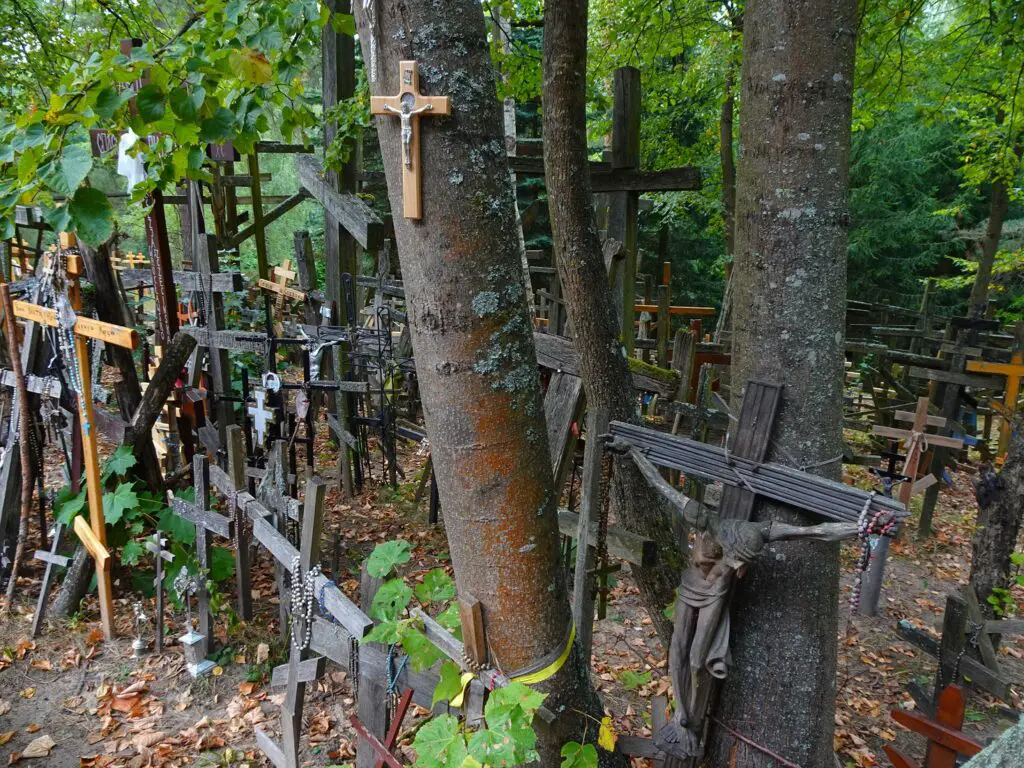
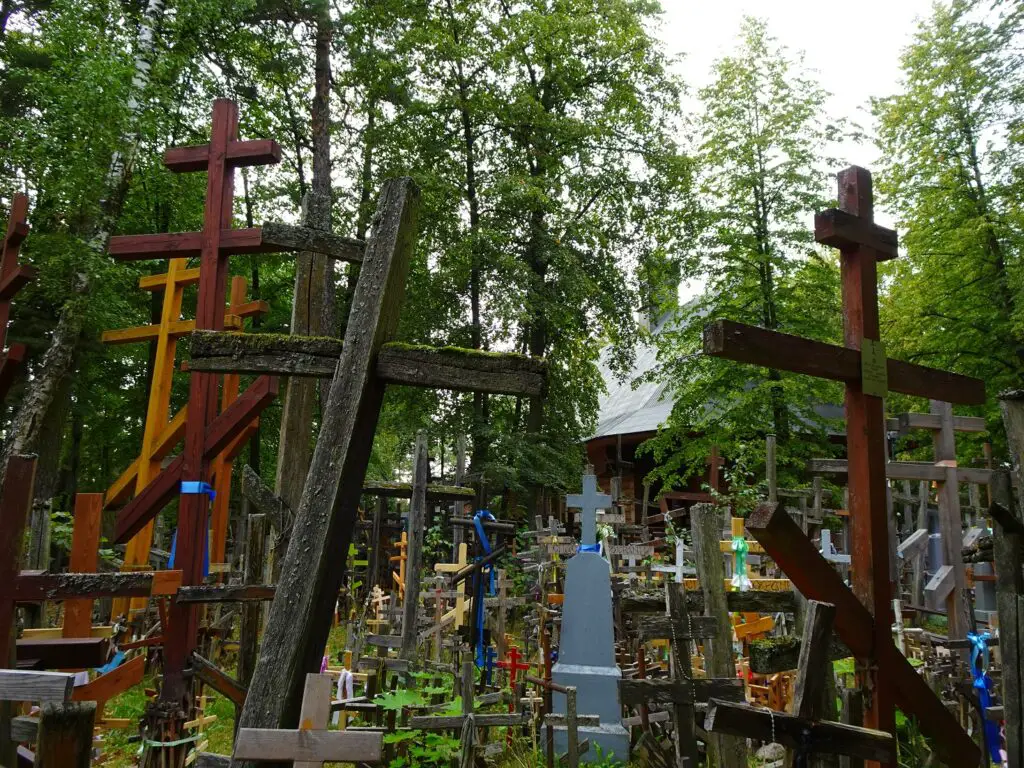
How to Get to Grabarka Holy Mount
We found the easiest way to get around the region was by rental car and stopped at the hill on our way from Drohiczyn to Białowieża. You can have a look for possible rental cars in the box below.
If you’re looking to reach Grabarka by public transport, there are a few trains a day from Hájnowka near Białowieża National Park to the village of Sycze, from where it’s a 20-minute walk south to the hill.
Is There an Entrance Fee?
No, the visit to Grabarka Mount is completely free.
Is There a Dresscode?
There is no official dress code, but as this is a super-important Orthodox Pilgrimage site, it’s a good idea to wear clothing that covers your knees and shoulders.
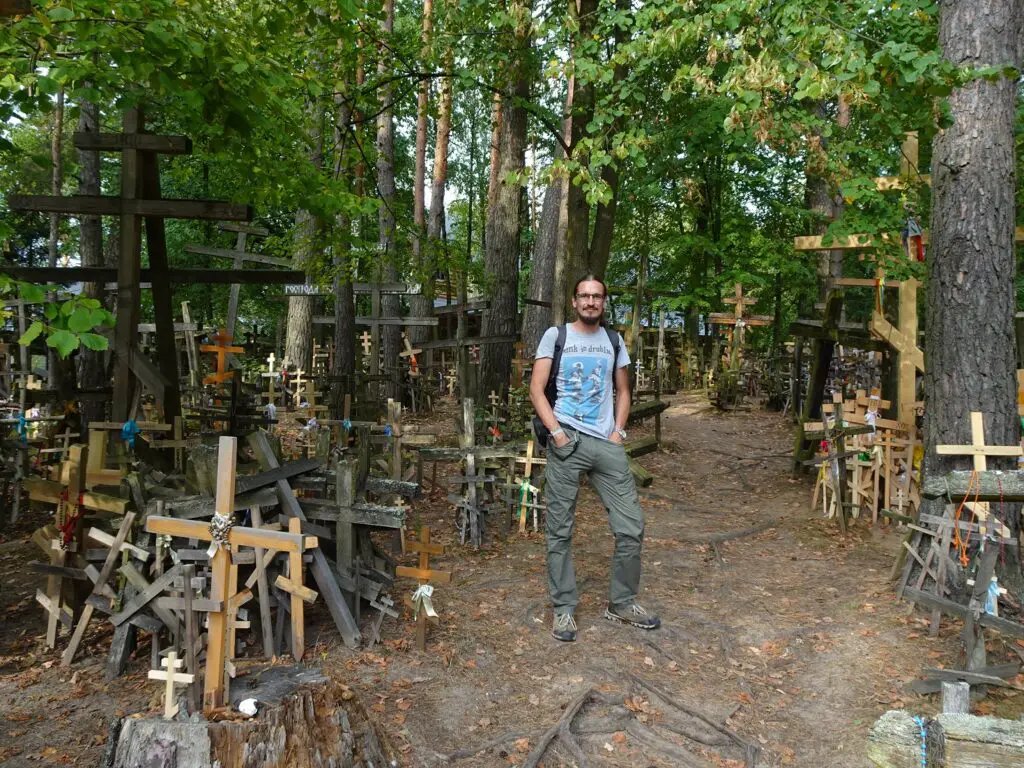
What Are the Opening Times of the Site?
The Mountain is open daily from dawn to dusk. We came here in the evening about an hour before sundown and had the place almost completely for ourselves, except for a couple of pilgrims, two monks and a nun.
What to See at Grabarka Holy Mount
The famous spring said to provide healing water can be found at the north-western edge of the hill. It’s covered by a little blue pavilion, which sports some nice Icon paintings. While we passed by, some people were busy filling copious amounts of the holy water in big plastic containers and also offered us some of it (hopefully, we’re now safe from all future diseases).
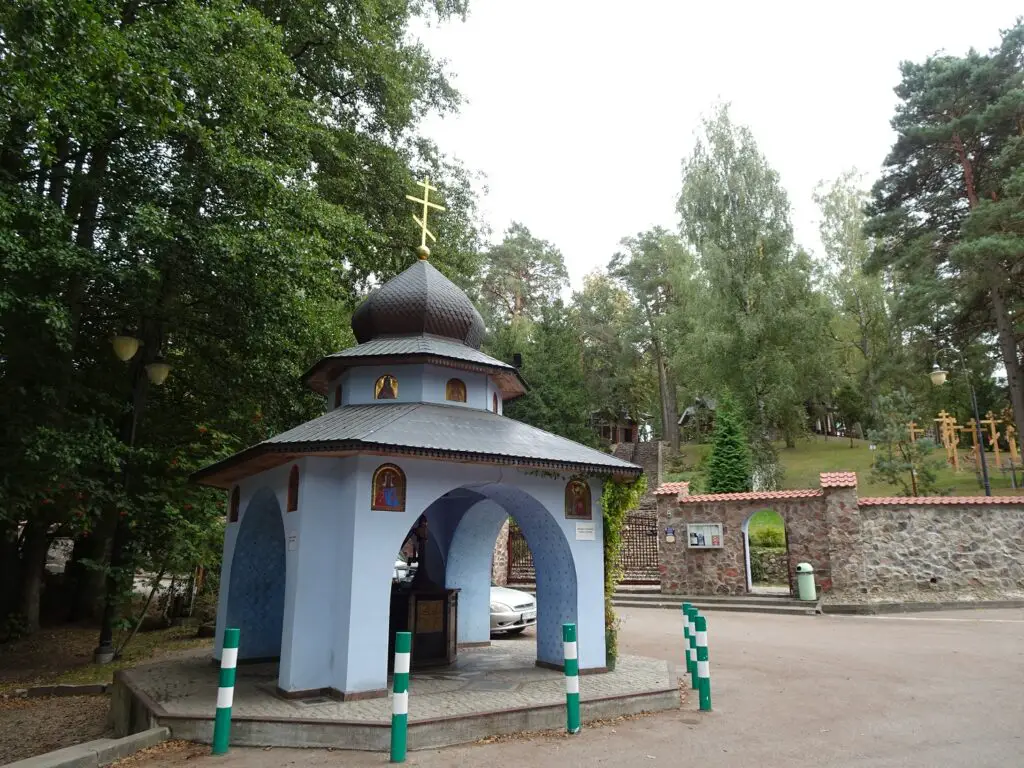
From the spring, a set of stairs climbs up to the wooden church on the summit of the hill. It might look older, but the building actually only dates to the late 1990s, as the previous church burned down due to an act of arson in 1990.
We found the interior to be beautiful nonetheless, especially as the walls and ceiling are completely covered in colourful paintings. The gilded iconostasis is also pretty impressive, as are the huge chandeliers hanging from the ceiling.
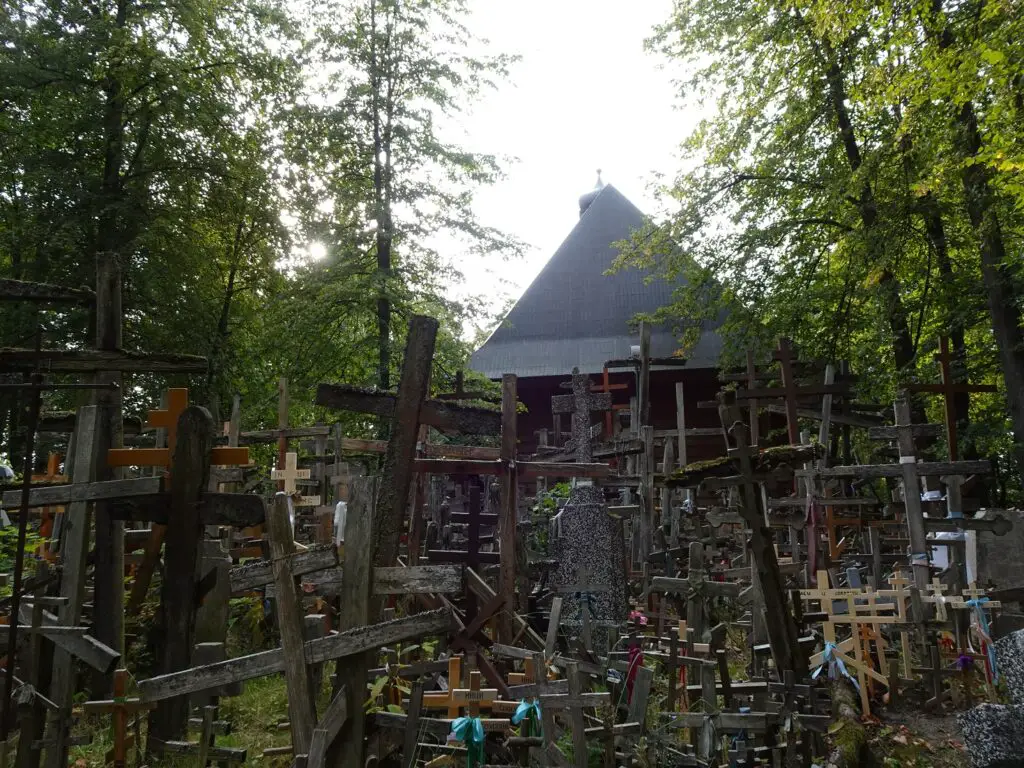
Of course, the main attraction is not the church itself, but rather the thousands of crosses surrounding it on three sides. They range from huge, towering structures to tiny pendants hung around other crosses. There are some truly unique variations. We particularly liked several crosses constructed from pieces of birch trees.
We took our time walking around and soaking up the tranquil, otherworldly atmosphere. Our enjoyment was certainly increased by the fact that we barely met anyone else on the hill, apart from a monk sitting near the church reading a book, as well as a nun and another monk walking between the church and the nearby monastery.

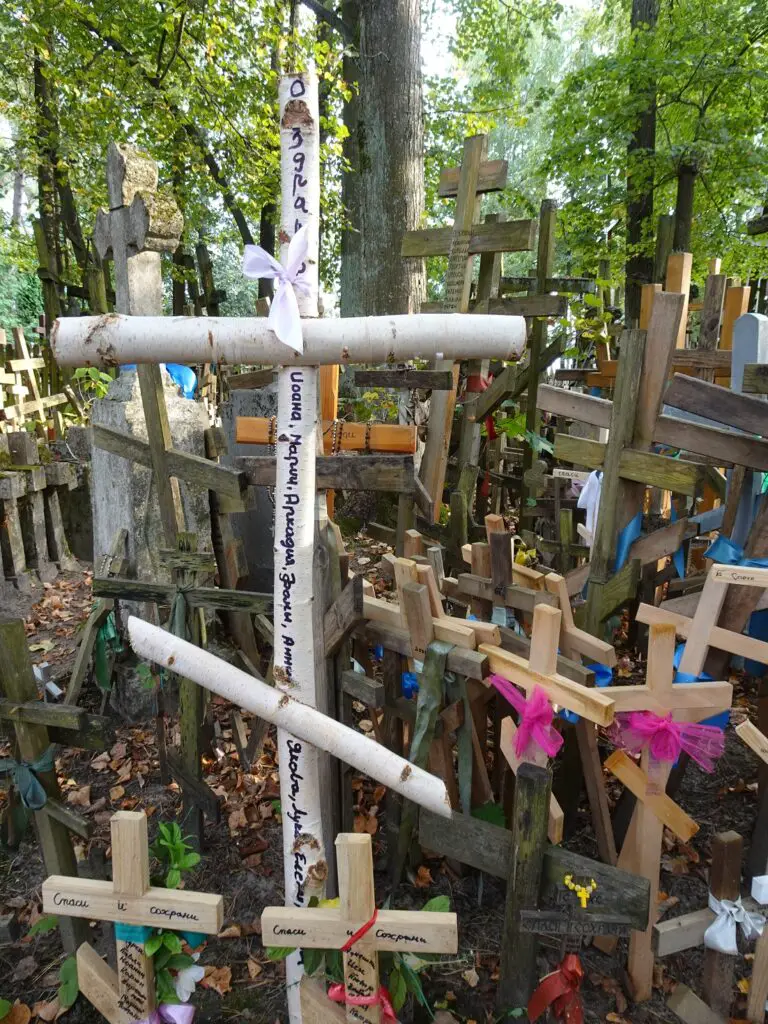
Enjoying this unique atmosphere is the best part of the visit in my opinion, so I highly recommend either coming to the mount early in the morning or late in the afternoon, like we did.
See Also
